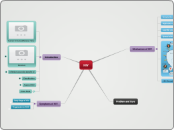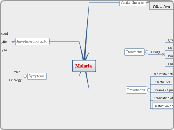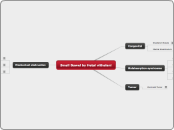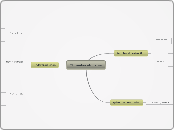HIV progresses to AIDS in about 10 years. The immune system has been severely damaged, making you susceptible to opportunistic infections — diseases that wouldn't usually trouble a person with a healthy immune system.
Primary infection (Acute HIV)
The majority of people infected by HIV develop a flu-like illness within a month or two after the virus enters the body.
HIV
Main topic
Symptoms of HIV
Progression to AIDS
Memory loss
Depression
Blotches
Pneumonia
mouth,anus or genital sore
Diarrhea
Prolong swelling of lymph node
Extreme but unexplained tiredness
Profuse night sweat
Rapid weight loss
Recurring fever
Early Stage of HIV
Mouth ulcers
Swollen lymph node
Fatigue
Sore throat
Muscle aches
Night sweats
Rash
Chills
Fever
Introduction
Know More
Types of HIV
Largely confined to West Africa
West Africa
Lower infectivity
More infective
More virulent
LAV & HTLV-III
Classification
Species
HIV 2
HIV 1
Genus
Lentivirus
Subfamily
Orthoretrovirinae
Family
Retroviridae
Order
Unassigned
Group
Group VI (ssRNA-RT)
Infection occurs by transfer of
Breast milk
Pre-ejaculate
Vaginal fluid
Semen
Blood
Structure
Matrix composed of viral protein
p17 surrounds capsid
ssRNA enclosed by conical capsid
ssRNA tightly bound to p7 (nucleus capsid protein)
Composed of two ssRNA
120nm in diameter
Spherical
Human Immunodeficiency Virus
http://www.hivinsite.ucsf.edu
Alternative Cure
US 5011695A : Sterilization of blood
Similar with physiologically innocuous sterilant
Optimal Outcome : STERILIZING CURE
Basically go in Surgically/Medically removed every last replication competent virus in the body
Problem and Cure
DIFF. HIV & AIDS
Being infected with HIV can lead to having AIDS
AIDS : Condition or a syndromea
HIV : Virus that may cause infection
Mechanism of HIV
HIV life cycle
Spread within the body
Cell-to-cell spread
2. an antigen presenting cell (APC) transmit HIV to T cells by productive infection or transfer of virions.
1. infected T cell transmit virus directly to a target T cell via virological synapse.
cell-free spread
then infect another T cell
enter blood/extracellular fluid
virus particles bud from an infected T cell
Asembly and release
HIV assembling on the surface of an infected macrophage.
Env polyprotein
-goes through the endoplasmic reticulum and is transported to golgi complex.
- cleaved by furin - form 2 HIV envelope ( gp41 and gp 120)
Mature HIV virion
- various structural components
- able to infect another cell
budded virion is immature - gag polyprotein need to cleaved int marix, capsid and nucleocapsid proteins.
virion begins to bud from host cell
Gag polyprotein associate with inner surface of PM + HIV genomic RNA --> virion
transported to plasma membrane
Replication and transcription
Viral replication
translated into regulatory proteins (Tat and Rev)
mRNAs export from nucleus into cytoplasm
intergrated DNA provirus is transcribed into RNA
- RNA splicing to produce mature mRNAs
Integration
(integrase)
Latent stage of HIV infection - integrated viral DNA may then lie dormant
integration of viral DNA into the host cell's genome
Reverse transcription
(reverse transcriptase)
copy it into complementary DNA (cDNA)
Dna polymerase - creates a sense DNA from antisense cDNA
liberate single stranded RNA genome (viral proteins)
Entry to the cell
HIV enters macrophages and CD4-positive T cells
- adsorption of glycoproteins on its surface to receptors (target cell)
- fusion of viral envelope ( with cell membrane)
- release of HIV capsid
Release
During microtubule-based transport to the nucleues, viral single -strand RNA genome is transcribed into double strand DNA, then intergrated into host chromosome
Enzyme : reverse transcriptase, integrase, ribonuclease, and protease
HIV RNA
Fusion
once bound with CD4 protein, envelope undergoes structural change, exposing the chemokine binding domains of gp120 and allowing them to interact with the target chemokine receptor.
high affinity attachment of the CD4 binding domains of gp120 to CD4
Introduces viral material into the cell
Occur when HIV virus comes into contact with the host cell









